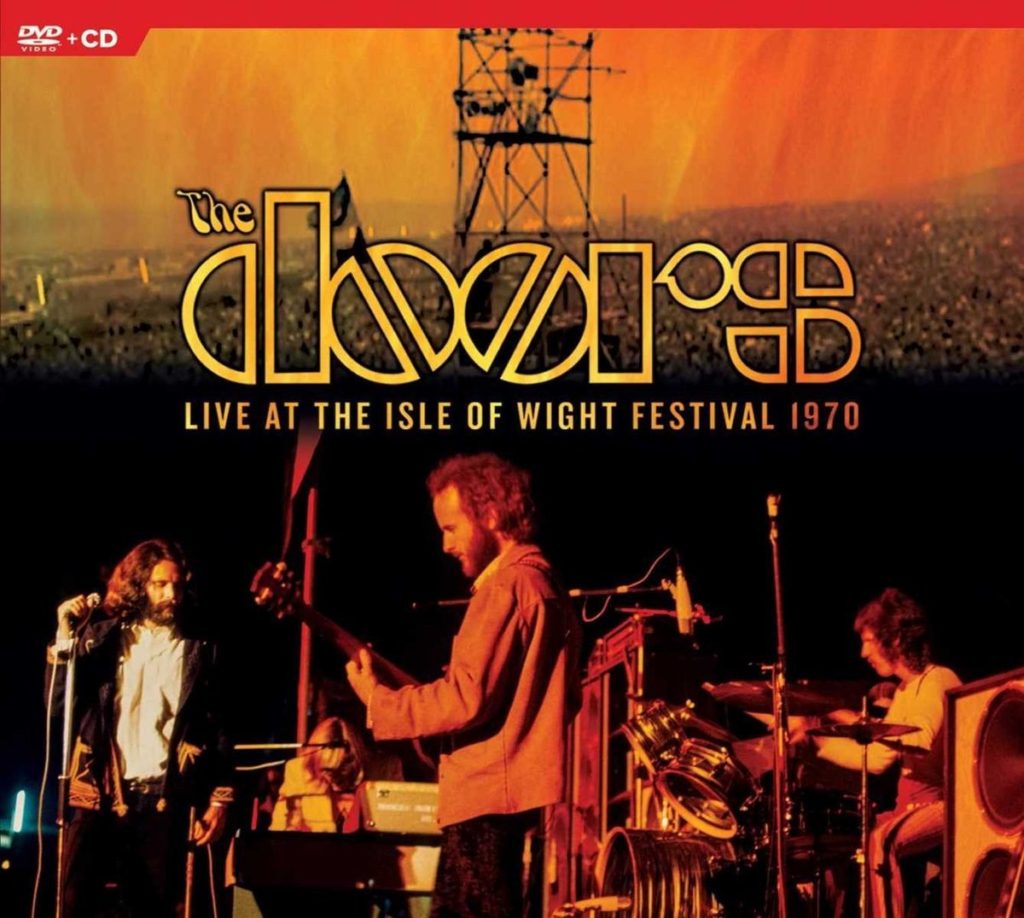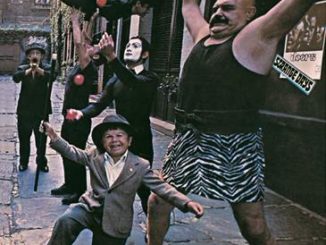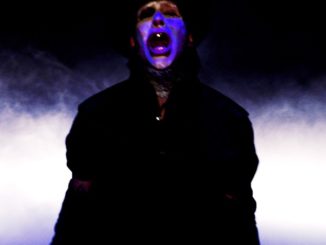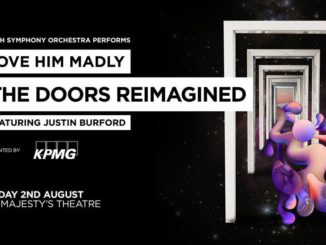
On March 1, 1969 in Miami, Florida, The Doors gave what might be their most infamous concert. Playing to an overcrowded venue lacking seats and air conditioning and with a very drunken Jim Morrison who arrived over an hour late, The Doors had a situation on their hands. By all accounts Morrison was in total shambles as he slurred his words, forgot lyrics, and engaged in drunken rambling, tirades, and insults between and during songs. Somehow they all got through it. A few days later, a warrant was issued for Morrison’s arrest. He was charged with a felony count of lewd and lascivious behavior and three misdemeanor counts including indecent exposure (i.e., pulling his penis out onstage), open profanity, and drunkenness. Touring opportunities all but evaporated as a twenty-city tour was cancelled when every city backed out. He pled innocent, and the trial began August 17 continuing for weeks. The judge scheduled recesses around several appearances The Doors had previously committed to that had not been pulled. One of those was the Isle of Wight Festival in late August.
The liner notes for the show are practically nonexistent. One of the treats of buying physical product is seeing and holding a booklet with photos, remembrances, and comments from the band, crew, and others close to the band. This release contains credits on one of the inner panels and a skimpy paragraph on the back of the package with the tracklisting. While fans will appreciate the economical price point of the package—the version with the Blu-ray costs only four American dollars than the CD alone—more notes would have been a welcome addition. The back paragraph sets the historical context for the Isle of Wight Festival explaining that it was “‘The Last Great Festival’” and over “600,000 fans” attended, which, to put it in perspective, was more than Woodstock’s 400,000 plus attendees.
Turning to published accounts doesn’t add much more. In an online interview, guitarist Robby Krieger said that Morrison “didn’t really do a great show. He sang well, but he didn’t move, like, an inch.” Keyboardist Ray Manzarek doesn’t give it much more time in his autobiography. In Light My Fire: My Life With The Doors he reinforces Krieger’s account, recalling that “Our set was subdued but very intense. We played with a controlled fury and Jim was in fine vocal form. His voice was rich and powerful and throaty. He sang for all he was worth but moved nary a muscle” (340). Drummer John Densmore didn’t seem to feel it was a highlight in their live career and has the harshest critique of the three. In Riders on the Storm: My Life with Jim Morrison and The Doors he says, “Jim isn’t moving an inch and the whole set is almost over. His body language is matched by his emotional commitment to the singing—nothing. No energy” (241). In defense of Morrison, given the pressures Morrison was under in his personal life with his ongoing court case among other matters, it’s little wonder his professional life suffered.
The Doors went on at two in the morning. Lighting is exceptionally dim. One source says Morrison requested there be no spotlights, but the video claims that The Doors were “unaware that they were to bring their own lighting package.” Although Morrison isn’t especially kinetic, the lack of lighting casts an unenergetic, sluggish, serious shadow on the whole band’s entire performance, eliminating and flattening visual detail and perhaps making the show appear more subdued than it actually was. At times, The Doors could be Hades’ house band laboring away in a Greek underworld of desolation. Most of the illumination comes from a single red light, which makes everything look raw and bloodshot as if someone draped a thin slice of rare roast beef over the camera lens.
This is difficult and dated source material. That the video looks as good as it does is a testament to the skill, work, and time that went into this offering. The sticker on the package says that it has been “restored and visually upgraded” with a “5.1 mix by original Doors engineer/mixer/co-producer Bruce Botnick,” and setup options include LPCM Stereo and DTS-HD Master Audio. Obviously, a lot of work was put into the audio and video, and we are getting the best possible version available of this material. There are plenty of reasons to pick this up. The sound quality is great. There’s not that much video of The Doors available, and this is historic because it’s the Isle of Wight festival and the last filmed performance of the Doors.
Ultimately, Morrison remains stationary but sounds fine as do the rest of The Doors. The vocal performance is completely present, just as the showmanship is totally absent. Overall, it’s not bad. It’s not superior. It’s solid and sometimes great as in the case of the almost fourteen-minute “When the Music’s Over,” the fourteen-minute “Light My Fire,” and the almost eighteen-minute “The End.” In general, I prefer The Doors live when they stretch out, expand, get loose, and jam as opposed to giving us short, punchy renditions of their songs, but briefer tracks like “Break On Through (To the Other Side)” sound good here, too.
The Doors follow the standard setlist from most of the shows they gave at that time. They recorded a number of concerts from the 1970 Roadhouse Blues Tour for their Absolutely Live album—still the place to start for live recordings of The Doors. Most of those individual shows have since been released along with others that were not part of the Absolutely Live project, and so you can find numerous versions of all of these tracks—even the somewhat rare “The End” appears on Live at the Hollywood Bowl, Live in Detroit, Live at the Matrix 1967, Live in New York, and Live in Vancouver 1970, though many superfans will be excited to have yet another version.
The lack of liner notes is partially salvaged by the video portion of the show, which opens with footage from the concert grounds and presumably the surrounding/nearby town area. While this plays, captions periodically appear discussing the Miami situation, the festival itself, and The Doors. The captions also pinpoint the date The Doors performed as August 30.
The other feature that supplements or functions as the liner notes is a seventeen-minute bonus video at the end of the show with interviews from original Doors manager Bill Siddons, Krieger, Densmore, and an archival 2002 interview with Manzarek. The various interviews give a lot of the context leading up to the show including Miami and its aftermath, the theory that Morrison was influenced by a performance he had recently see of the provocative Living Theater, the tension between Morrison the wild rock star and Morrison the cool and controlled poet, and conditions at the festival. They also advance the counter theory that Morrison wasn’t lethargic and indifferent at the Isle of Wight Festival. Instead, they now believe that he made a conscious choice to focus on his vocal performance rather than his physical performance. There’s a lot of love and reverence expressed for Morrison and the era. A special treat appears toward the end when Densmore starts talking about the significance of “The End” as Krieger plays it on classical guitar. For a brief moment, you can hear Krieger singing it with Morrison whose vocal is blended with Krieger’s. If this is the stuff we are getting in the place of printed liner notes, I can start to forgive their minimization. There is an insightful audio interview with Morrison at the Isle of Wight festival with live music in the background that is not included in this package, and one wonders why not (ownership rights could have been an issue). With these types of packages, there’s always something else to include and always something to quibble about.
The whole “Miami Incident,” as it is referred to, came to a conclusion in late September when a jury deliberated and let Morrison off for lewd behavior and public drunkenness, but found him guilty of profanity and exposure despite no reliable witness testimony and no photographic evidence. On October 30 he was sentenced to pay a $500 fine and serve six months and sixty days of hard labor with several years of probation to follow, but the real punishment was the falling apart of The Doors and the loss of Jim Morrison. You don’t read to read much about Morrison to realize he had numerous issues going on before Miami and court sentencing, but the thought of serving hard time in the Dade County jail might have been the final nail in his coffin.
Free on appeal, Morrison recorded some of his poetry. Encouraged by the experience, he agreed to perform in Dallas on December 11 and in New Orleans the next night. The Dallas show was a triumph with a strong performance including the title track from the upcoming L.A. Woman album. New Orleans was the opposite with Morrison unravelling mid-show and destroying the stage after the last song.
Morrison left for Paris in March of 1971 and died there on July 3.
On December 9, 2010, the day after Morrison’s birthday, then Florida Governor Charlie Crist read a statement to the clemency board laying out the details of the case and asking for Morrison’s pardon. It was unanimously granted.
TRACKLIST
CD / Blu-ray
1. Roadhouse Blues
2. Backdoor Man
3. Break on Through (To the Other Side)
4. When the Music’s Over
5. Ship of Fools
6. Light My Fire
7. The End (Medley: Across the Sea / Away in India / Crossroads Blues / Wake Up)



